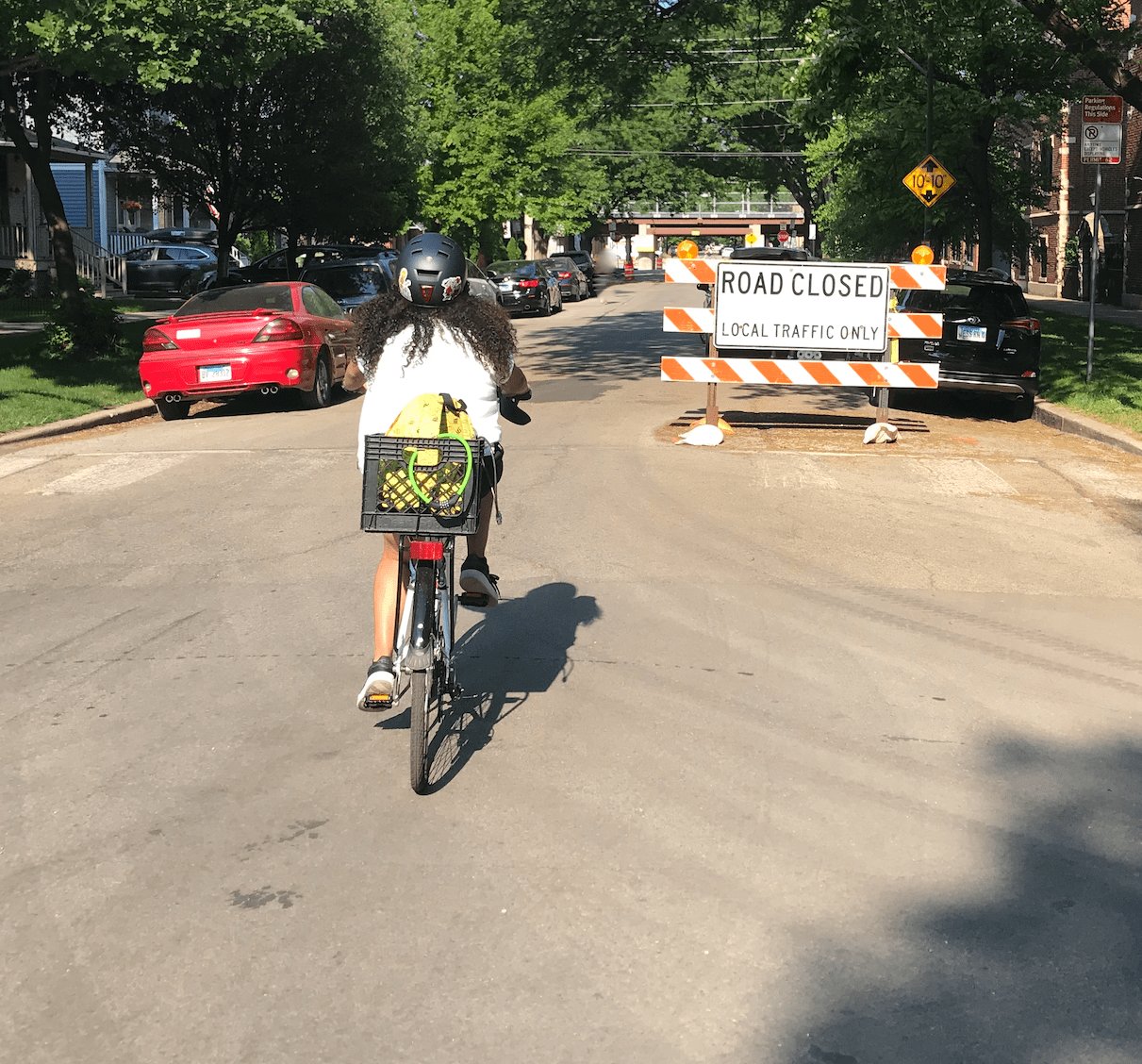Recently neighbors reporting problems with cut-through traffic and fast driving on the Bloomingdale alternative Slow Streets route. (The city of Chicago calls these "Shared Streets"). And last week Chicago Department of Transportation commissioner Gia Biagi said she hopes to see a future “where we drive a little slower, and we look out for each other.” These were reminders that we need traffic calming on as many residential streets as possible.
The vast majority of Chicago roadways already are, in effect, shared streets,” where motorists are expected to drive safely around people on bikes. But just about anyone who has cycled in our city has a story or five about an encounter with an aggressive or speeding driver.
When it comes to sharing the road, people on bikes are on the losing side of the equation. Those who follow me on social media know that I will not cheer CDOT slapping paint down on the road and calling it a safe bike lane. Paint is not protection. We must build real, physically protected cycling infrastructure, the kind that doesn’t leave people on bikes vulnerable to the whims of drivers and will actually lead to more people choosing biking as a form of transportation.
As thousands of Chicagoans are calling on the City Council to greatly reduce funding for the Chicago Police Department, or completely eliminate it, residents are demanding more investment in things that actually improve people's lives, such as healthcare, including mental health services; education; affordable housing, and other forms of community development.
Improving our transportation system, with a focus on mobility justice, falls under this category as well. We can invest in improving the commutes of the Black and Brown Chicagoans who are most likely to have long commutes. Improvements such as increasing bus and South Side Metra line frequency, bus-only lanes, transit-priority traffic signals, and more affordable fares would be a step forward. We can help make biking a viable option for African-American and Latinx residents through better infrastructure, education, and encouragement. We can prevent racial profiling incidents by reducing the use of police officers for traffic enforcement. One way to do so is to create self-policing streets.
A few months ago I asked an officer to do his job by citing a driver who was parked in a bike lane, and the cop responded by threatening to arrest me. I came back to the desire to have bike lanes that greatly reduced the chances of anyone parking or driving in them. The key to keeping bike lanes free of motor vehicles isn’t more enforcement by police or anyone else. It’s designing the lanes in such a way that drivers intuitively know the space isn’t meant for them, or at the very least are not able to maneuver themselves into the space. These types of physically protected bikeways must become standard and be installed citywide in order to help get more Chicagoans from all walks of life on on bikes.
However, I don't have any illusions that protected lanes alone will be enough to reduce Black and Brown Chicagoans' interactions with the police. In recent years Chicago police have written exponentially more tickets for bike in fractions in some communities of color compared to majority-white neighborhoods. CPD officials justified that practicing by claiming that using zero-tolerance bike enforcement as a pretext for searches in high-crime areas is an effective crime-fighting strategy.
But as Chicago activists fighting for reallocating police funds have noted, the most effective way to reduce crime is not to increase policing, but rather to address the root causes. And as I said above, along with investing in social services, improving mobility justice is part of the solution. Here are some more strategies:
- Traffic calming such as chicanes, raised crosswalks , pocket playgrounds, and road diets (perhaps by building planter-protected bike lanes?) on the majority of residential streets
- Install more speed cameras on arterial streets. To make the penalties for violations more equitable fines should assessed on a sliding scale, according to the speeder’s income, and traffic school should be offered as an alternative to paying a fee.
- Bike vouchers for low- and moderate-income Chicagoans who would like to take up cycling
- Subsidized transit fares for low-income Chicagoans
There are so many more possibilities to increase mobility justice, and therefore racial equity, in Chicago. What would you add to this list?



